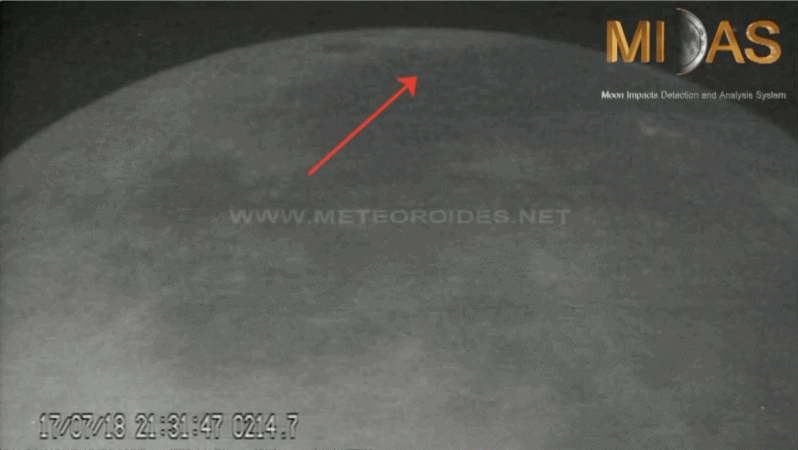
The Moon is hit by several asteroids every year. It sometimes works like a shield for Earth as it takes a few hits every now and then. One such recent incident involved two asteroids crashing into the Moon within a 25-hour period. The event was spotted from the ground by a telescope system in Spain.
The European Space Agency (ESA) released footage of the strikes that took place on 17 and 18 July. In spite of the bright flashes of light visible all the way from Earth, the fragments of space rock that actually impacted the Moon might not have been larger than a walnut. The meteors were part of the midsummer Alpha Capricornids meteor shower notes a report by the space agency.
The moon received two rocks to its face from space while passing through the tail of Comet 169P/NEAT, said the ESA.
There have been many claims by people who have claimed to witness short-lived phenomena occurring on the face of the moon, for over a thousand years, said ESA in the statement. "By definition, these transient flashes are hard to study, and determining their cause remains a challenge.
The Moon git hit by two asteroids last month- https://t.co/10ZvQPMd3F pic.twitter.com/439Esexs77
— Immanuel Jotham (@JothamManny) August 6, 2018
"For this reason, scientists are studying these 'transient lunar phenomena' with great interest, not only for what they can tell us about the moon and its history, but also [for what they can tell us] about Earth and its future," said the ESA.
The images were taken by the Moon Impacts Detection and Analysis System (MIDAS), stretched across three observatories in Spain. MIDAS has high-resolution CCD video cameras specifically designed to pick up subtle flashes of light on the Moon, reports Space.com. It is reportedly easier to spot flashes of light if they happen during a lunar eclipse, like the one that happened last month.
While flashes of light with Moon impacts are by themselves interesting, such happenings also help astronomers gain a better understanding of impacts in other locations within the Solar System.
"By studying meteoroids on the moon, we can determine how many rocks impact it and how often, and from this we can infer the chance of impacts on Earth," Jose Maria Madiedo of MIDAS in the statement.














